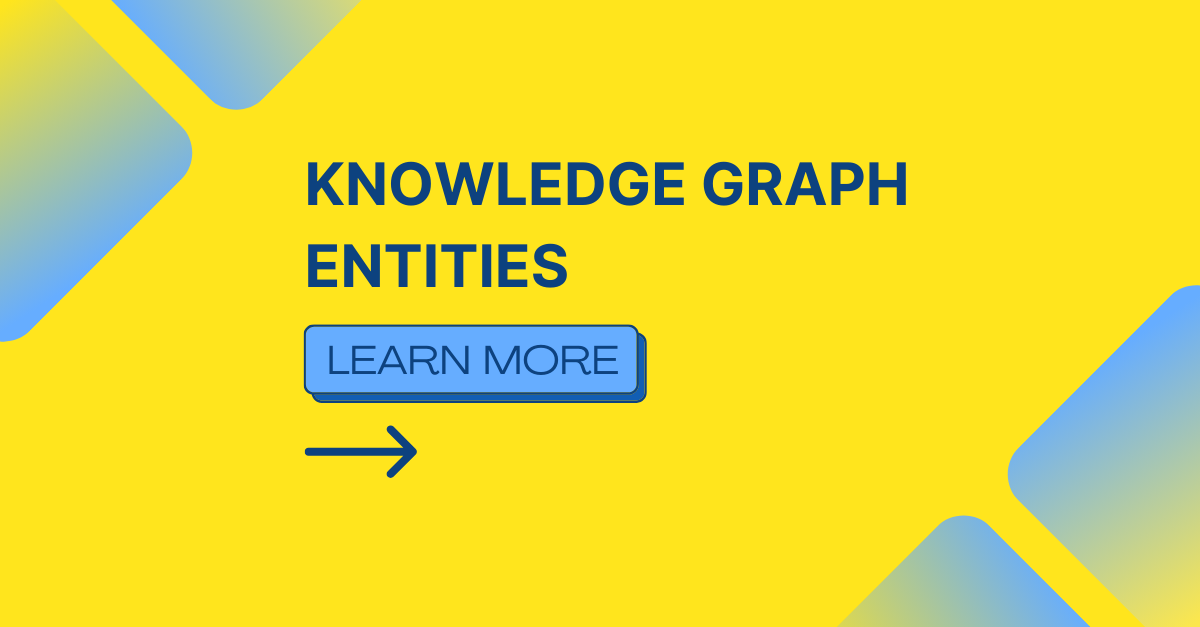Knowledge Graph Entities

The case for Knowledge Graph Entities
There’s a strange satisfaction in seeing your name or business surface in a Google Knowledge Graph card. It feels almost like a rite of passage – a signal that you’ve crossed from the chaotic world of plain links into Google’s structured understanding of the web. Yet getting there (or even checking whether you’re there) isn’t straightforward. SEOs comb over schema.org specifications, add JSON‑LD to their sites and still wonder if Google has noticed. Curious clients ask whether their organisation “exists in that knowledge graph thing”, and you shrug and open a new tab.
I kept bumping into these conversations, so I decided to build something to scratch that itch. Knowledge Graph Entities (KGE for short) is a simple tool that answers two questions:
- Does this thing exist in Google’s Knowledge Graph?
- If so, what does Google think it is?
It’s not trying to replace Google. Instead, it acts as a polite translator between everyday curiosity and an API that normally sits behind layers of documentation.
From curiosity to interface
The landing page greets you with a bold promise: “Unleash the power of Google’s knowledge graph at your fingertips.”. Underneath, three stats hint at the scale of the system – billions of entities, high accuracy and dozens of schema types – and a call‑to‑action button invites you to Search Entities. A sample card for David Beckham illustrates the end result: a name, a concise description, type labels (Person | Thing) and a source link. If you want proof, there’s a button to view the entity directly in Google’s SERPs and another to visit its official website.
That card demonstrates the ethos of the project. It pulls data from Google’s Knowledge Graph, displays it cleanly and tells you where it came from. If the entity doesn’t exist, you get nothing – a refreshing change from tools that fill in the blanks with best guesses.
How the search works
Clicking the Search Entities button brings you to a simple form. You type an entity name, choose how many results you want (10, 20, 50 or 100) and, if you like, filter by type (person, place, organisation, book, film and so on). You can also select a language, because Google’s Knowledge Graph supports multiple languages. Hit Search and the page fetches results from Google’s API. Each result appears as a colourful card with the entity’s name, a one‑line description, schema types and links. Searching “David Beckham” returns cards for the footballer himself, his son Cruz, his father David Edward Alan Beckham and other related personalities. That breadth illustrates how the Knowledge Graph connects entities through family relationships and categories.
The results aren’t limited to people. Choose “Place” and search for “Johannesburg” to see a brief description, the entity type (Place | Thing), a link to Wikipedia and a button to view it on Google. Pick “Book” and search for a novel; KGE will fetch its description and author details. The tool quietly handles Google’s pagination behind the scenes, so you don’t have to fiddle with API cursors.
FAQs and learning resources
Because the term “Knowledge Graph” still puzzles many people, KGE includes an FAQ section. It explains that Google’s Knowledge Graph is a database used to enrich search results with structured information. It describes how the graph links data from sources like Wikipedia and Wikidata and why this benefits users by providing concise answers directly on the results page. There are practical tips for getting your business into the graph: implement schema.org markup and get listed on reputable databases such as Wikidata. The questions are written for people who aren’t steeped in SEO jargon, and the answers strike a balance between helpful and succinct.
For readers who want to go deeper, a “Learn” section links to short articles on topics like the evolution of Google’s Knowledge Graph and its impact on SEO. These pieces summarise what changed when Google introduced the graph in 2012 and why entity‑based search matters today. The site is not trying to be an academic journal; it’s an accessible primer and a signpost to more comprehensive sources.
Why this matters
If Leaf Peek is about making AI useful for plant lovers, Knowledge Graph Entities is about making structured search intelligible to everyone else. It gives you a tangible way to check whether your schema markup is working, to see what Google knows about your clients organisations or to satisfy random curiosity on a Sunday afternoon. The process is intentionally transparent: no scraped databases, no hallucinated answers, just a direct query to Google’s own knowledge base.
Building KGE also taught me a lot. Interfacing with Google’s Knowledge Graph API made it clear how strict type filtering is and how important multilingual support can be. Designing the user experience forced me to confront the limits of what you can reasonably display before overwhelming people with options. And writing the FAQs reminded me how often we skip over fundamental definitions.
In short, Knowledge Graph Entities exists to bridge a gap. The graph is one of the most influential datasets on the internet, yet many people don’t even realise they’re interacting with it. By giving them a simple search box and some explanatory context, KGE demystifies the graph and invites everyone to peek behind the curtain.